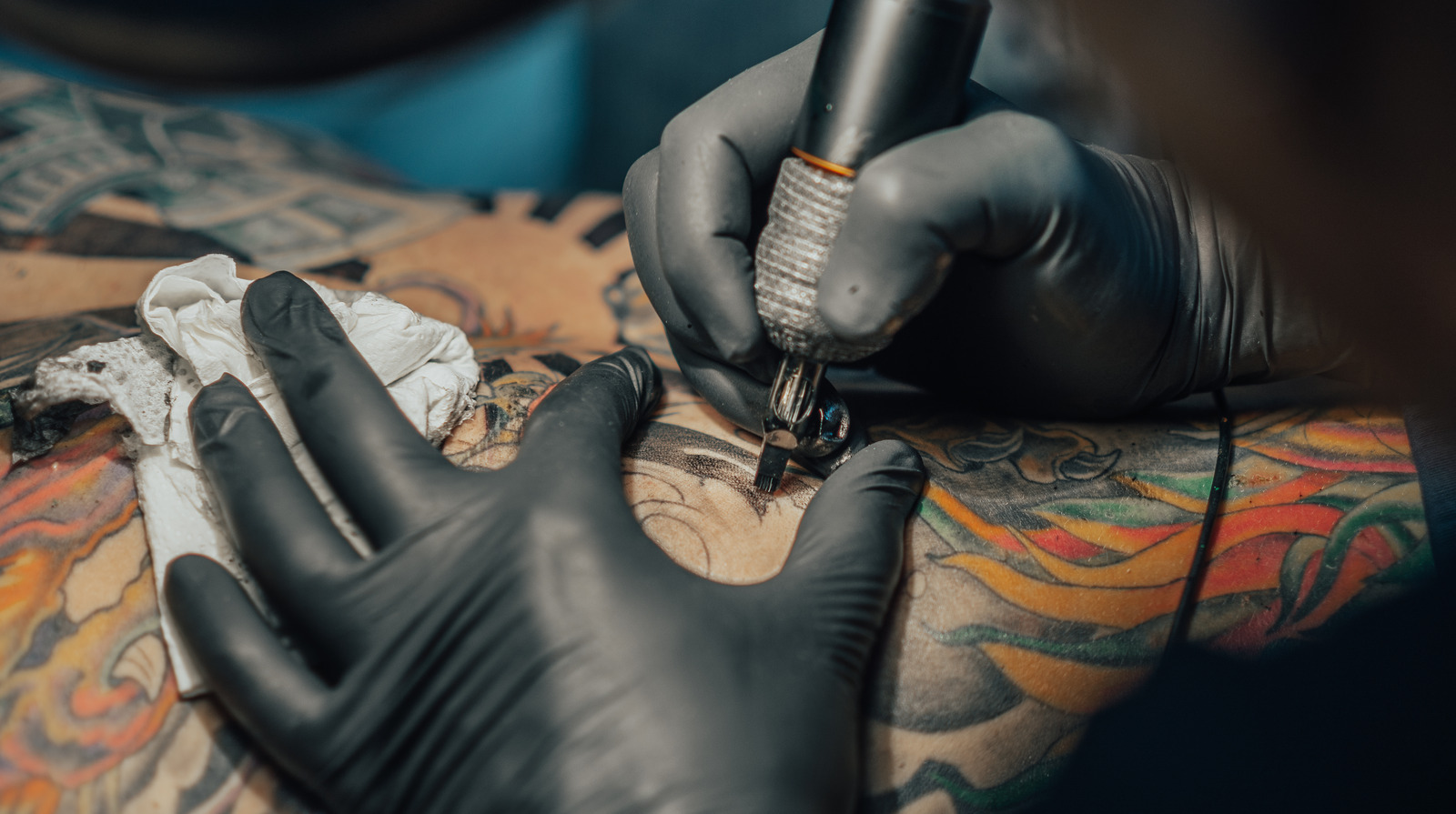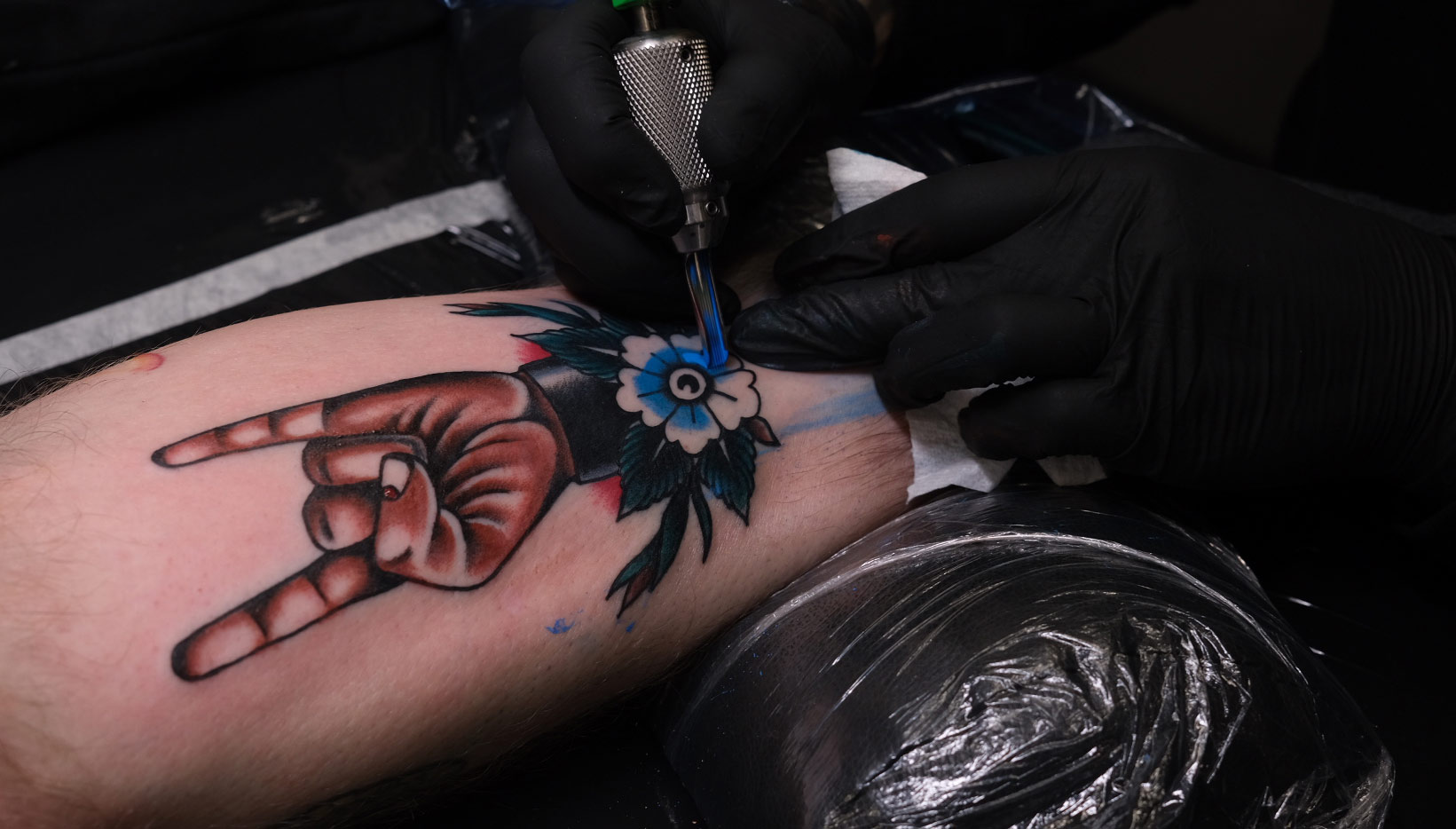
Should I Leave a Deposit for a Small Tattoo Appointment? The Ink-Credible Truth
So, you’re buzzing with excitement! You’ve finally decided to get that tiny, perfect tattoo you’ve been dreaming of. Maybe it’s a delicate constellation behind your ear, a minimalist symbol on your wrist, or a cheeky little avocado on your ankle (because, why not?). But then, a question pops into your head: "Should I leave a deposit for this small tattoo appointment?"
The answer, like most things in life, isn’t a simple yes or no. It’s more like a "probably, and here’s why!" Let’s dive into the inky depths of tattoo etiquette and explore the reasons behind deposits, how they benefit both you and your artist, and what to consider before handing over your hard-earned cash.
The Tattoo World: A Business Built on Trust (and Ink!)
Think of your tattoo artist as a skilled artisan, a painter of skin, a storyteller with needles and ink. They’re not just slapping a design on you; they’re creating a piece of art that will live on your body forever. And just like any artist, they need to protect their time, resources, and livelihood. This is where deposits come in.
Why Tattoo Artists Ask for Deposits: More Than Just Money
A deposit isn’t just a way for the artist to line their pockets (although, let’s be real, they do need to pay the bills!). It’s a sign of commitment, a mutual agreement that you’re serious about getting inked and that they’re serious about providing you with an amazing tattoo experience.
Here’s a closer look at the key reasons why deposits are common practice in the tattoo world:
-
Protecting the Artist’s Time: Tattoo artists often book appointments weeks, even months, in advance. A no-show or last-minute cancellation leaves them with an empty slot they could have filled with another client. A deposit helps compensate for this lost income.
-
Securing the Appointment: A deposit acts as a guarantee that you’ll show up for your appointment. It’s a tangible way of saying, "I’m committed to this!"
-
Covering Setup Costs: Even for small tattoos, artists need to prepare their workstation, sterilize equipment, and gather the necessary supplies, including ink, needles, and stencils. These materials aren’t free, and the deposit helps offset these initial costs.
-
Compensating for Custom Design Work: If your small tattoo involves a custom design or requires the artist to create a unique stencil, the deposit may also cover the time and effort spent on the design process.
-
Reducing No-Shows and Cancellations: Unfortunately, no-shows and last-minute cancellations are a reality in the tattoo industry. Deposits discourage these behaviors and help artists manage their schedules more effectively.
The Benefits of Paying a Deposit: More Than Just Good Karma
Paying a deposit isn’t just about being polite; it also offers several benefits for you, the client.
-
Securing Your Preferred Time Slot: Popular artists and studios often have long waiting lists. Paying a deposit ensures that you get the appointment time that works best for you.
-
Demonstrating Your Commitment: By paying a deposit, you show the artist that you’re serious about getting your tattoo and that you respect their time and expertise. This can lead to a more positive and collaborative experience.
-
Building Trust with Your Artist: A deposit is a gesture of good faith that can help build a strong rapport with your artist. This trust is essential for a successful tattoo experience.
-
Ensuring the Artist Prioritizes Your Project: While a small tattoo might seem insignificant, a deposit signals to the artist that you value their work and that you’re invested in the process.
-
Avoiding Last-Minute Price Hikes: In some cases, paying a deposit can help you lock in the agreed-upon price for your tattoo, protecting you from unexpected price increases.
When is a Deposit Absolutely Necessary?
While deposits are generally a good idea, there are certain situations where they’re almost always required:
-
Custom Designs: If your tattoo involves a custom design or requires the artist to create a unique stencil, a deposit is almost always necessary to compensate for their design time.
-
Large or Complex Tattoos: Even if your tattoo is relatively small, if it involves intricate details or requires a significant amount of time to complete, the artist may require a deposit.
-
Popular Artists or Studios: If you’re booking an appointment with a highly sought-after artist or studio, a deposit is often mandatory due to high demand.
-
First-Time Clients: Some artists require deposits from first-time clients to ensure they’re serious about getting tattooed and to protect themselves from no-shows.
-
Traveling Artists: If you’re booking an appointment with a traveling artist who’s visiting your area, a deposit is often required to cover their travel expenses and ensure they have a guaranteed booking.
What to Consider Before Paying a Deposit: Read the Fine Print!
Before you hand over your deposit, it’s crucial to understand the studio’s deposit policy. Ask the following questions:
-
How much is the deposit? The deposit amount can vary depending on the studio, the artist, and the size and complexity of the tattoo.
-
Is the deposit refundable? Most studios have a non-refundable deposit policy, but it’s essential to confirm this upfront.
-
Under what circumstances is the deposit forfeited? Understand the studio’s cancellation policy and what happens to your deposit if you need to reschedule or cancel your appointment.
-
How can I pay the deposit? Most studios accept cash, credit cards, or online payment methods.
-
Does the deposit go towards the final cost of the tattoo? In most cases, the deposit is deducted from the final price of your tattoo.
Navigating the Deposit Conversation: Be Open and Honest
Talking about deposits can feel a little awkward, but it’s an essential part of the tattoo process. Be open and honest with your artist about your budget and any concerns you may have. Remember, communication is key to a successful tattoo experience.
If you’re unsure whether a deposit is required for your small tattoo, simply ask the artist. A professional and reputable artist will be happy to explain their deposit policy and answer any questions you may have.
When a Deposit Might Not Be Necessary: Exceptions to the Rule
While deposits are generally recommended, there are a few rare situations where they might not be required:
-
Walk-in Appointments: Some studios offer walk-in appointments for small, simple tattoos. In these cases, a deposit might not be necessary.
-
Very Small and Simple Tattoos: If your tattoo is extremely small and simple, and the artist is confident that you’ll show up for your appointment, they might waive the deposit.
-
Long-Standing Relationship with the Artist: If you’re a repeat client with a long-standing relationship with the artist, they might trust you enough to waive the deposit.
Red Flags to Watch Out For: When to Walk Away
While most tattoo artists are ethical and professional, it’s essential to be aware of potential red flags:
-
Unusually High Deposit: If the deposit seems excessively high compared to the estimated cost of the tattoo, it’s a cause for concern.
-
Refusal to Provide a Clear Deposit Policy: A reputable studio should have a clear and transparent deposit policy that’s readily available to clients.
-
Pressure to Pay a Deposit Immediately: While it’s normal for artists to request a deposit when booking an appointment, you shouldn’t feel pressured to pay it immediately without having a chance to review the studio’s policy.
-
Lack of Communication or Transparency: If the artist is unresponsive to your questions or unwilling to provide information about their deposit policy, it’s a sign that something might be amiss.
The Golden Rule: Respect and Professionalism
Ultimately, the decision of whether to leave a deposit for a small tattoo appointment comes down to respect and professionalism. By paying a deposit, you’re showing the artist that you value their time, expertise, and artistry. You’re also contributing to a healthy and sustainable tattoo industry.
So, should you leave a deposit? In most cases, the answer is a resounding YES! It’s a small price to pay for a lifetime of ink-redible art.
Conclusion: Inked for Life, Started with Respect
Getting a tattoo, no matter how small, is a significant decision. It’s a permanent piece of art that will tell your story for years to come. By understanding the importance of deposits and approaching the process with respect and professionalism, you can ensure a positive and memorable tattoo experience. So, go ahead, book that appointment, pay that deposit, and get ready to rock your new ink!
FAQs: Your Burning Tattoo Deposit Questions Answered
1. What happens if I need to reschedule my appointment?
Most studios allow you to reschedule your appointment with sufficient notice (usually 48-72 hours). However, your deposit may be forfeited if you reschedule with less notice or if you reschedule multiple times. Always check the studio’s rescheduling policy before paying your deposit.
2. Can I use my deposit for a different tattoo design?
This depends on the studio’s policy. In some cases, you may be able to transfer your deposit to a different design if you notify the artist in advance. However, if the new design requires significantly more time or effort, the artist may require an additional deposit.
3. What if the artist cancels my appointment?
If the artist cancels your appointment due to unforeseen circumstances, you’re typically entitled to a full refund of your deposit or the option to reschedule your appointment.
4. Is it okay to negotiate the deposit amount?
While it’s generally not appropriate to negotiate the deposit amount, you can always ask the artist to explain how the deposit is calculated and what it covers.
5. What if I’m unhappy with the tattoo after it’s finished?
If you’re unhappy with the tattoo after it’s finished, it’s essential to communicate your concerns to the artist. A reputable artist will be willing to work with you to address any issues and ensure you’re satisfied with the final result. However, deposits are generally non-refundable, even if you’re unhappy with the tattoo. That’s why it’s so important to choose an artist whose style you admire and to communicate your expectations clearly before getting tattooed.








